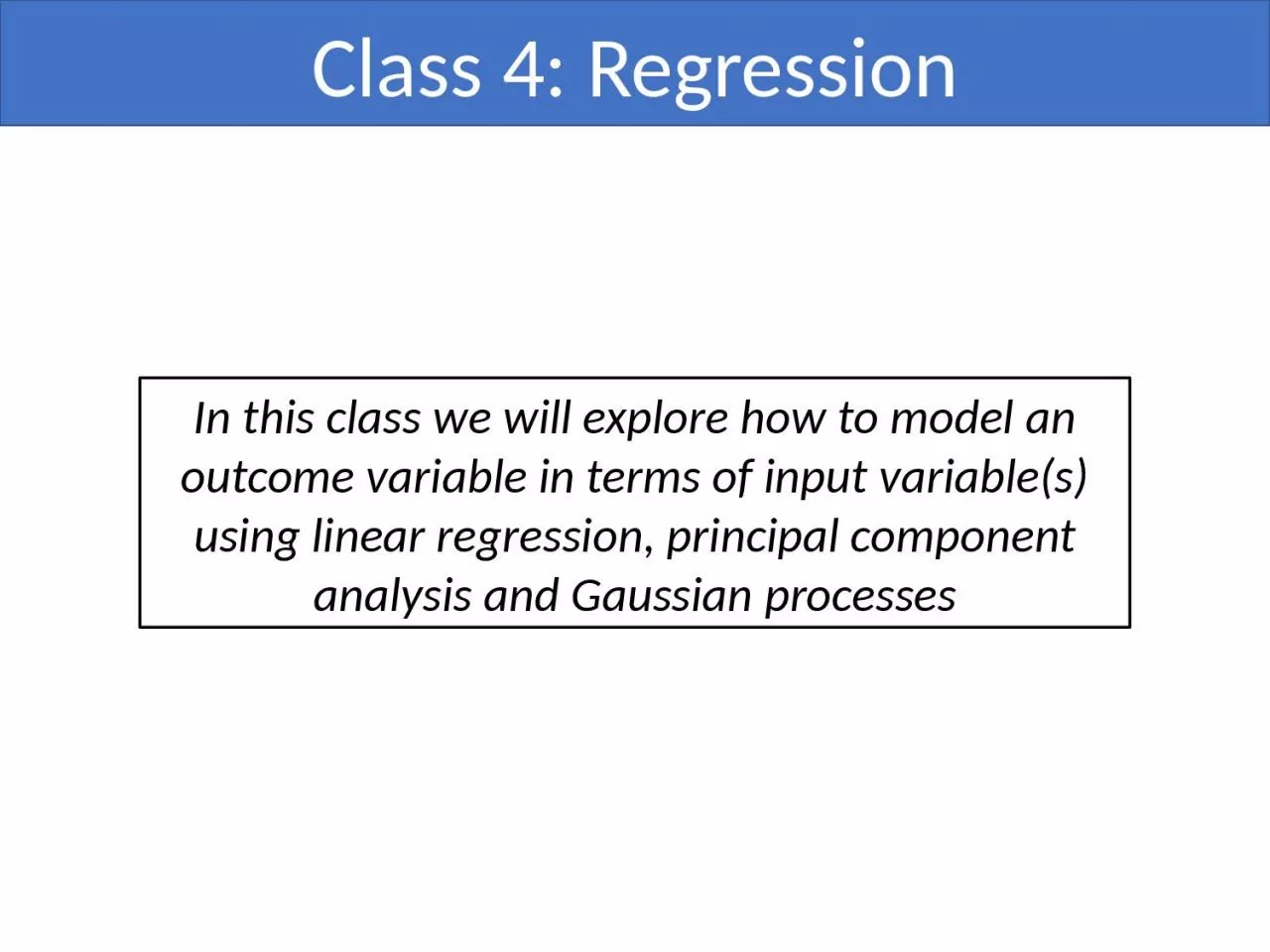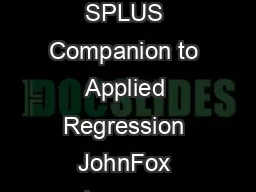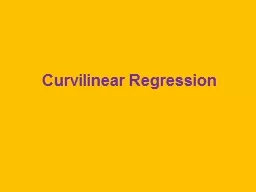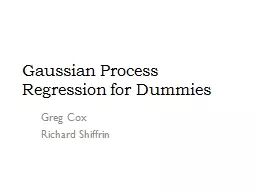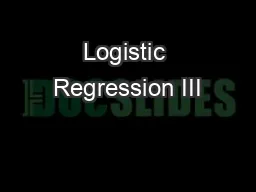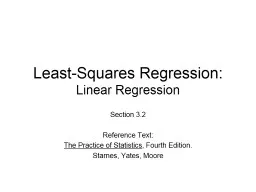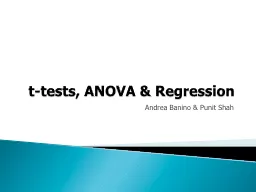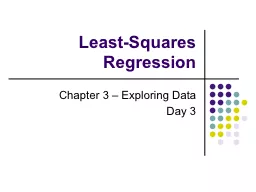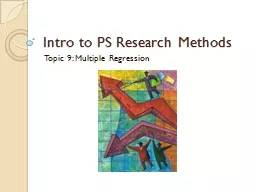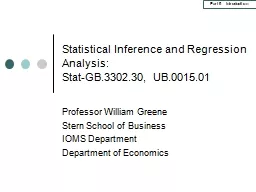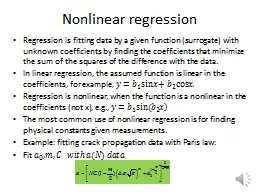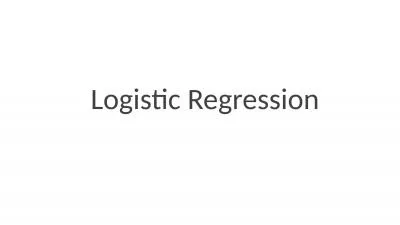PPT-Class 4: Regression In this class we will
Author : audrey | Published Date : 2023-10-26
explore how to model an outcome variable in terms of input variables using linear regression principal component analysis and Gaussian processes At the end of this
Presentation Embed Code
Download Presentation
Download Presentation The PPT/PDF document "Class 4: Regression In this class we wil..." is the property of its rightful owner. Permission is granted to download and print the materials on this website for personal, non-commercial use only, and to display it on your personal computer provided you do not modify the materials and that you retain all copyright notices contained in the materials. By downloading content from our website, you accept the terms of this agreement.
Class 4: Regression In this class we will: Transcript
explore how to model an outcome variable in terms of input variables using linear regression principal component analysis and Gaussian processes At the end of this class you should be able to . Di64256erentiating 8706S 8706f Setting the partial derivatives to 0 produces estimating equations for the regression coe64259cients Because these equations are in general nonlinear they require solution by numerical optimization As in a linear model isavectorofparameterstobeestimatedand x isavectorofpredictors forthe thof observationstheerrors areassumedtobenormallyandindependentlydistributedwith mean 0 and constant variance The function relating the average value of the response to the pred Monotonic but Non-Linear. The relationship between X and Y may be monotonic but not linear.. The linear model can be tweaked to take this into account by applying a monotonic transformation to Y, X, or both X and Y.. Greg Cox. Richard Shiffrin. Continuous response measures. The problem. What do we do if we do not know the functional form?. Rasmussen & Williams, . Gaussian Processes for Machine Learning. http://www.gaussianprocesses.org/. SIT095. The Collection and Analysis of Quantitative Data II. Week 9. Luke Sloan. Introduction. Recap – Last Week. Workshop Feedback. Multinomial Logistic Regression in SPSS. Model Interpretation. In Class Exercise. Linear Regression. Section 3.2. Reference Text:. The Practice of Statistics. , Fourth Edition.. Starnes, Yates, Moore. Warm up/ quiz . Draw a quick sketch of three scatterplots:. Draw a plot with r . Eric Feigelson. Classical regression model. ``The expectation (mean) of the dependent (response) variable Y for a given value of the independent variable X (or vector of variables . X. ) is equal to a specified mathematical function . Andrea . Banino. & Punit . Shah . Samples . vs. Populations . Descriptive . vs. Inferential. William Sealy . Gosset. (‘Student’). Distributions, probabilities and P-values. Assumptions of t-tests. Chapter 3 – Exploring Data. Day 3. Regression Line. A straight line that describes how a . _________ . variable, . __. ,. . changes as an . ___________ variable. , . ___. ,. . changes. used to . __________ . Intro to PS Research Methods. Announcements. Final on . May 13. , 2 pm. Homework in on . Friday. (or before). Final homework out . Wednesday 21 . (probably). Overview. we often have theories involving . Stat-GB.3302.30, UB.0015.01. Professor William Greene. Stern School of Business. IOMS Department . Department of Economics. Statistical Inference and Regression Analysis. Part 0 - Introduction. . Professor William Greene; Economics and IOMS Departments. In linear regression, the assumed function is linear in the coefficients, for example, . .. Regression is nonlinear, when the function is a nonlinear in the coefficients (not x), e.g., . T. he most common use of nonlinear regression is for finding physical constants given measurements.. 2. Dr. Alok Kumar. Logistic regression applications. Dr. Alok Kumar. 3. When is logistic regression suitable. Dr. Alok Kumar. 4. Question. Which of the following sentences are . TRUE. about . Logistic Regression. Regression Trees. Characteristics of classification models. model. linear. parametric. global. stable. decision tree. no. no. no. no. logistic regression. yes. yes. yes. yes. discriminant. analysis.
Download Document
Here is the link to download the presentation.
"Class 4: Regression In this class we will"The content belongs to its owner. You may download and print it for personal use, without modification, and keep all copyright notices. By downloading, you agree to these terms.
Related Documents

